第48章 CHAPTER IX THE GREENBOTTLES(4)
As early as two or three days after the hatching, I obtain a striking result. The meat, which was thoroughly drained by the blotting paper, has become so moist that the young vermin leave a wet mark behind them as they crawl over the glass. The swarming brood creates a sort of mist with the crossing and criss-crossing of its trails. The control tube, on the contrary, keeps dry, proving that the moisture in which the worms move is not due to a mere exudation from the meat.
Besides, the work of the maggot becomes more and more evident.
Gradually, the flesh flows in every direction like an icicle placed before the fire. Soon, the liquefaction is complete. What we see is no longer meat, but fluid Liebig's extract. If I overturned the tube, not a drop of it would remain.
Let us clear our minds of any idea of solution by putrefaction, for in the second tube a piece of meat of the same kind and size has remained, save for color and smell, what it was at the start. It was a lump and it is a lump, whereas the piece treated by the worms runs like melted butter. Here we have maggot chemistry able to rouse the envy of physiologists when studying the action of the gastric juice.
I obtain better results still with hard-boiled white of egg. When cut into pieces the size of a hazel nut and handed over to the greenbottle's grubs, the coagulated albumen dissolves into a colorless liquid which the eye might mistake for water. The fluidity becomes so great that, for lack of a support, the worms perish by drowning in the broth; they are suffocated by the immersion of their hind part, with its open breathing holes. On a denser liquid, they would have kept at the surface; on this, they cannot.
A control tube, filled in the same way, but not colonized, stands beside that in which the strange liquefaction takes place. The hardboiled white of egg retains its original appearance and consistency. In course of time, it dries up, if it does not turn moldy; and that is all.
The other quaternary compounds performing the same functions as albumen--the gluten of cereals, the fibrin of blood, the casein of cheese and the legumin of chickpeas--undergo a similar modification, in varying degrees. Fed, from the moment of leaving the egg, on any one of these substances, the worms thrive very well, provided that they escape drowning when the gruel becomes too clear; they would not fare better on a corpse. And, as a general rule, there is not much danger of going under: the matter only half liquefies; it becomes a running pea soup, rather than an actual fluid.
Even in this imperfect case, it is obvious that the greenbottle grubs begin by liquefying their food. Incapable of taking solid nourishment, they first transform the spoil into running matter;then, dipping their heads into the product, they drink, they slake their thirst, with long sups. Their dissolvent, comparable in its effects with the gastric juice of the higher animals, is, beyond a doubt, emitted through the mouth. The piston of the hooks, continually in movement, never ceases spitting it out in infinitesimal doses. Each spot touched receives a grain of some subtle pepsin, which soon suffices to make that spot run in every direction. As digesting, when all is said, merely means liquefying, it is no paradox to assert that the maggot digests its food before swallowing it.